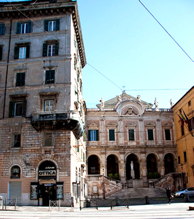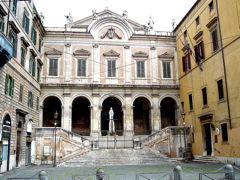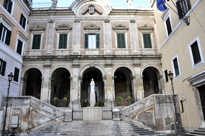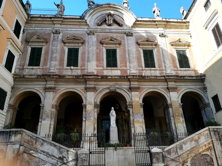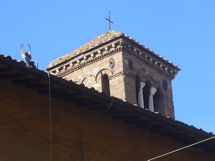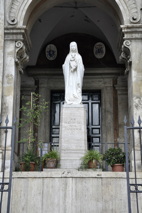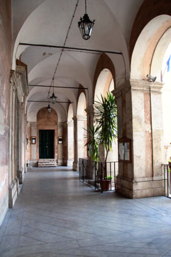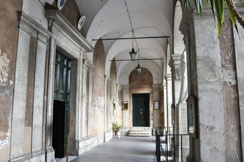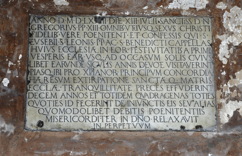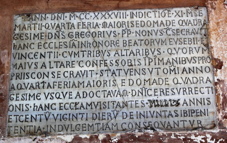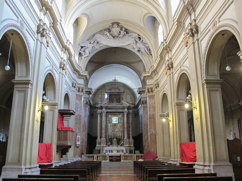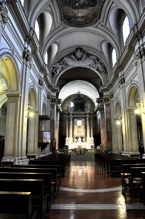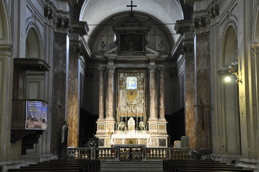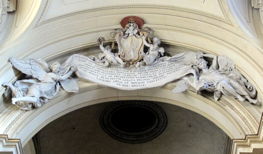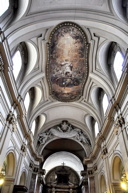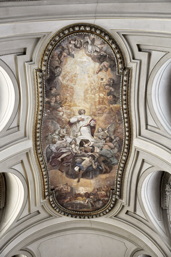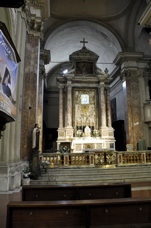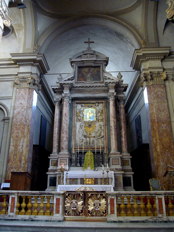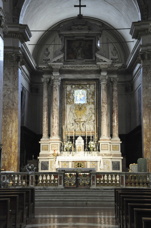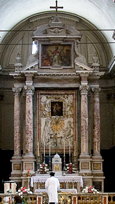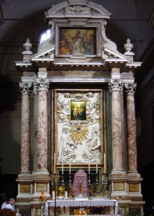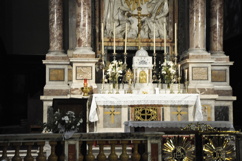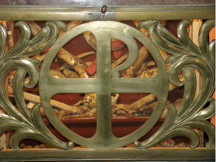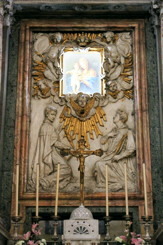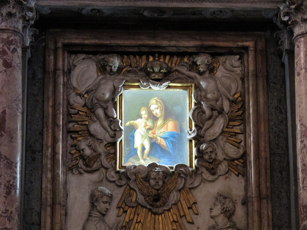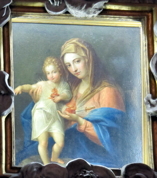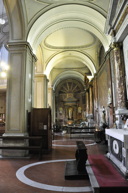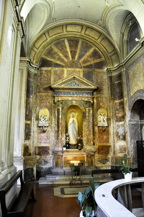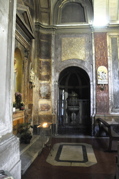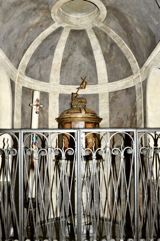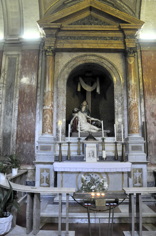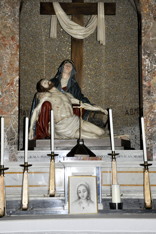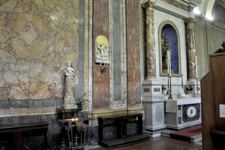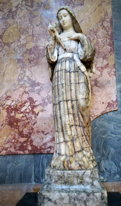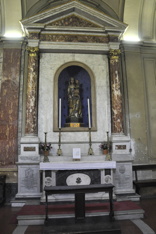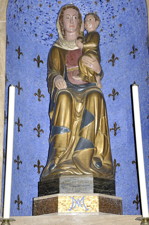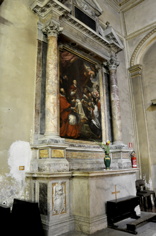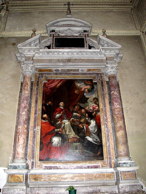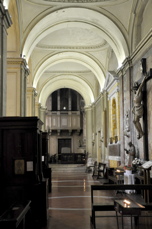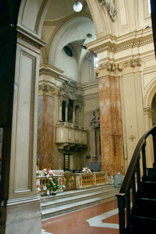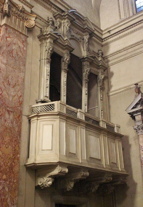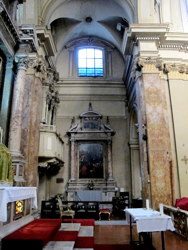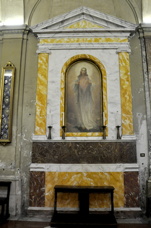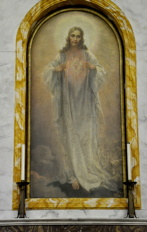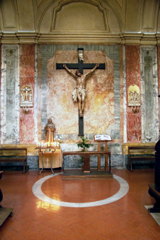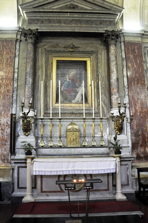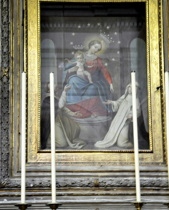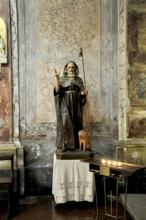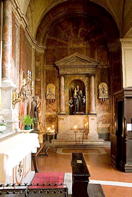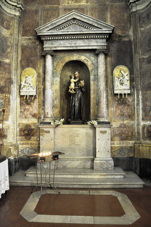Sant'Eusebio is an 18th century former monastic church, on ancient foundations and possibly containing 13th century fabric, at the north corner of the Piazza Vittorio Emanuele II in what is now the rione Esquilino (historically, rione Monti). The church is now parochial and titular, but not a minor basilica. The dedication is to the obscure martyr of the fourth century
St Eusebius of Rome.
For reference, a plan of the church is available
here.
The church was financed by St Eusebius of Bologna (not St Eusebius of Vercelli), a friend of St Ambrose, and has its first historical mention in a graffito of the year 474 in the catacombs of Santi Marcellino e Pietro ad Duas Lauros. The titulus became a church around 745, widely restored by Pope Zacharias (741-752) following the collapse of the roof.
Honorius III had the church rebuilt from the foundations, and it was re-consecrated in 1238 Pope Gregory IX. A tablet commemorating the rebuilding may still be found in the porch of the church, to the right of the door. Around the same time, the bell-tower or campanile was added.
The high altar, presbyterium area and choir were remodeled by Onorio Longhi in 1600. A rebuilding of the façade was begun in 1711 by Carlo Stefano Fontana(nephew of the more famous Carlo Fontana) under the patronage of Cardinal Enrico Enríquez. The rebuilding was actually begun in 1753 by Nicolò Picconi, and it took about six years. He was the designer of the present interior, although the choir fittings and the high altar from the work by Longhi were kept.
A consequence of the urbanization works of the late nineteenth century for the new Esquilino district and the construction of Piazza Vittorio Emanuele II in 1877-1880, the church appears raised above the street level. So now access to the church is by way of a double flight of steps.
The stuccos and the painting inside the church, also equipped with a new organ, were renovated in 1938 by the parish priest Monsignor Dottarell.
